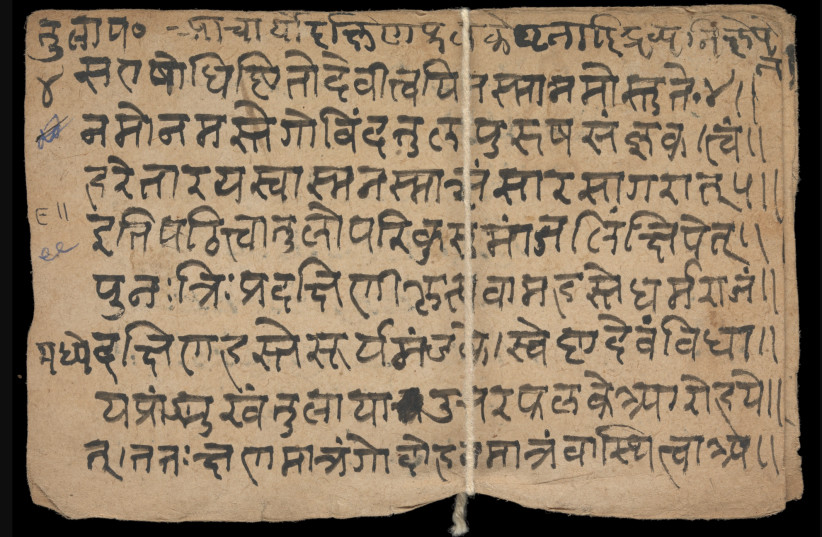Being stumped for centuries will no longer get in the way of these linguists after a PhD candidate at the University of Cambridge found a tool that can help decode nearly any word in the ancient language of Sanskrit. This discovery was made after this student cracked a code using a formula first taught by “the father of linguistics.”
Using Pāṇini’s revered "language machine," which people across the globe considered to be one of the great intellectual achievements in history, words like "mantra" and "guru" were able to be correctly translated and decoded for modern-day use.
The discovery, made by PhD candidate Rishi Rajpopat and published in a study in the journal Apollo—University of Cambridge Repository, is seen as "revolutionary" to many in the field of linguistics and allows people in modern times to be able to decode a long lost language in a new way - on the computer!
Rajpopat stated that, “Pāṇini had an extraordinary mind and he built a machine unrivaled in human history. He didn’t expect us to add new ideas to his rules. The more we fiddle with Pāṇini's grammar, the more it eludes us.”
“Pāṇini had an extraordinary mind and he built a machine unrivaled in human history. He didn’t expect us to add new ideas to his rules. The more we fiddle with Pāṇini's grammar, the more it eludes us.”
Rishi Rajpopat

Previously, the metarule was associated followed as: "in the event of a conflict between two rules of equal strength, the rule that comes later in the grammar’s serial order wins." Words that came before or after any given word would be subjected to these complicated guidelines.
Realizing it didn't have to be so complicated after all
Just months before Rajpopat made his discovery, his supervisor at Cambridge, Vincenzo Vergiani, professor of Sanskrit, made a prediction: “If the solution is complicated, you are probably wrong.”
Rajpopat responded with his own "AHA!" moment. The answer was in front of him all along.
“I had a eureka moment in Cambridge. After 9 months trying to crack this problem, I was almost ready to quit, I was getting nowhere. So I closed the books for a month and just enjoyed the summer, swimming, cycling, cooking, praying and meditating. Then, begrudgingly I went back to work, and, within minutes, as I turned the pages, these patterns starting emerging, and it all started to make sense. There was a lot more work to do but I’d found the biggest part of the puzzle.”
The PhD candidate got straight to work - which lasted quite a while.
“Over the next few weeks I was so excited, I couldn’t sleep and would spend hours in the library including in the middle of the night to check what I’d found and solve related problems. That work took another two and half years.”
So just what was this missing puzzle piece after all?
Part of this missing piece was the understanding of Sanskrit as an ancient language that is still used by some 25,000 Indians today.
Rajpopat said, “Some of the most ancient wisdom of India has been produced in Sanskrit and we still don’t fully understand what our ancestors achieved. We’ve often been led to believe that we’re not important, that we haven’t brought enough to the table. I hope this discovery will infuse students in India with confidence, pride, and hope that they too can achieve great things. Now we have the algorithm that runs Pāṇini's grammar, we could potentially teach this grammar to computers."
Rajpopat added, "Computer scientists working on natural language processing gave up on rule-based approaches over 50 years ago. So teaching computers how to combine the speaker’s intention with Pāṇini’s rule-based grammar to produce human speech would be a major milestone in the history of human interaction with machines, as well as in India's intellectual history."
